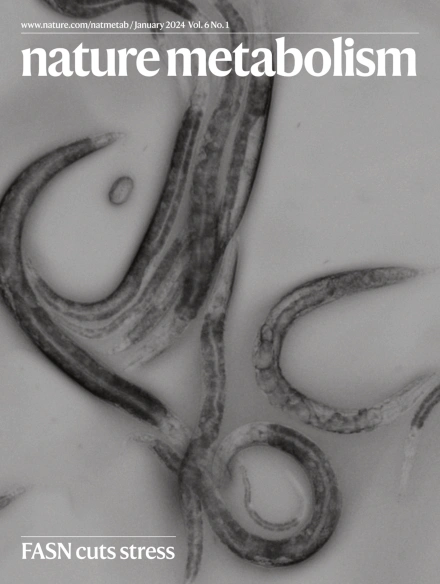Conservation and divergence of metabolic phenotypes between patient tumours and matched xenografts
IF 20.8
1区 医学
Q1 ENDOCRINOLOGY & METABOLISM
引用次数: 0
Abstract
Patient-derived xenografts (PDXs) are frequently used as preclinical models, but their recapitulation of tumour metabolism in patients has not been closely examined. We developed a parallel workflow to analyse [U-13C]glucose tracing and metabolomics data from patient melanomas and matched PDXs. Melanomas from patients have substantial TCA cycle labelling, similar to levels in human brain tumours. Although levels of TCA cycle labelling in PDXs were similar to those in the original patient tumours, PDXs had higher labelling in glycolytic metabolites. Through metabolomics, we observed consistent alterations of 100 metabolites among PDXs and patient tumours that reflected species-specific differences in diet, host physiology and microbiota. Despite these differences, most of nearly 200 PDXs retained a ‘metabolic fingerprint’ largely durable over six passages and often traceable back to the patient tumour of origin. This study identifies both high- and low-fidelity metabolites in the PDX model system, providing a resource for cancer metabolism researchers. Rao and Cai et al. perform a detailed metabolic comparison between primary tumours from patients and their matching xenografts, which identify conserved as well as divergent metabolic patterns.


患者肿瘤和匹配异种移植物之间代谢表型的保存和分化
患者来源的异种移植物(PDXs)经常被用作临床前模型,但它们对患者肿瘤代谢的再现尚未得到仔细研究。我们开发了一个并行工作流程来分析患者黑色素瘤和匹配pdx的[U-13C]葡萄糖追踪和代谢组学数据。来自患者的黑色素瘤有大量的TCA循环标记,类似于人类脑肿瘤的水平。虽然pdx中的TCA循环标记水平与原始患者肿瘤相似,但pdx在糖酵解代谢物中具有更高的标记。通过代谢组学,我们观察到pdx和患者肿瘤之间100种代谢物的一致变化,反映了物种特异性饮食、宿主生理和微生物群的差异。尽管存在这些差异,在近200个pdx基因中,大多数都保留了一个“代谢指纹”,这种指纹在六次传代中基本持续存在,而且通常可以追溯到患者肿瘤的起源。本研究确定了PDX模型系统中高保真度和低保真度的代谢物,为癌症代谢研究人员提供了资源。
本文章由计算机程序翻译,如有差异,请以英文原文为准。
求助全文
约1分钟内获得全文
求助全文
来源期刊

Nature metabolism
ENDOCRINOLOGY & METABOLISM-
CiteScore
27.50
自引率
2.40%
发文量
170
期刊介绍:
Nature Metabolism is a peer-reviewed scientific journal that covers a broad range of topics in metabolism research. It aims to advance the understanding of metabolic and homeostatic processes at a cellular and physiological level. The journal publishes research from various fields, including fundamental cell biology, basic biomedical and translational research, and integrative physiology. It focuses on how cellular metabolism affects cellular function, the physiology and homeostasis of organs and tissues, and the regulation of organismal energy homeostasis. It also investigates the molecular pathophysiology of metabolic diseases such as diabetes and obesity, as well as their treatment. Nature Metabolism follows the standards of other Nature-branded journals, with a dedicated team of professional editors, rigorous peer-review process, high standards of copy-editing and production, swift publication, and editorial independence. The journal has a high impact factor, has a certain influence in the international area, and is deeply concerned and cited by the majority of scholars.
 求助内容:
求助内容: 应助结果提醒方式:
应助结果提醒方式:


